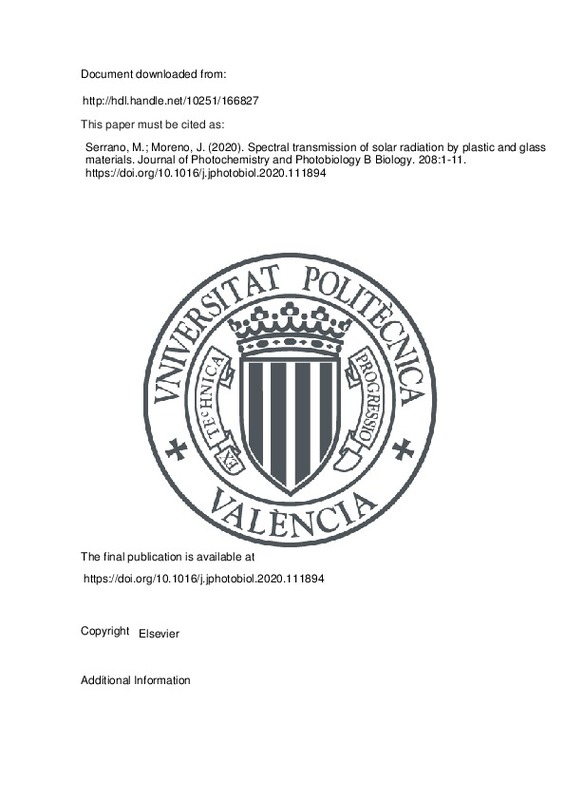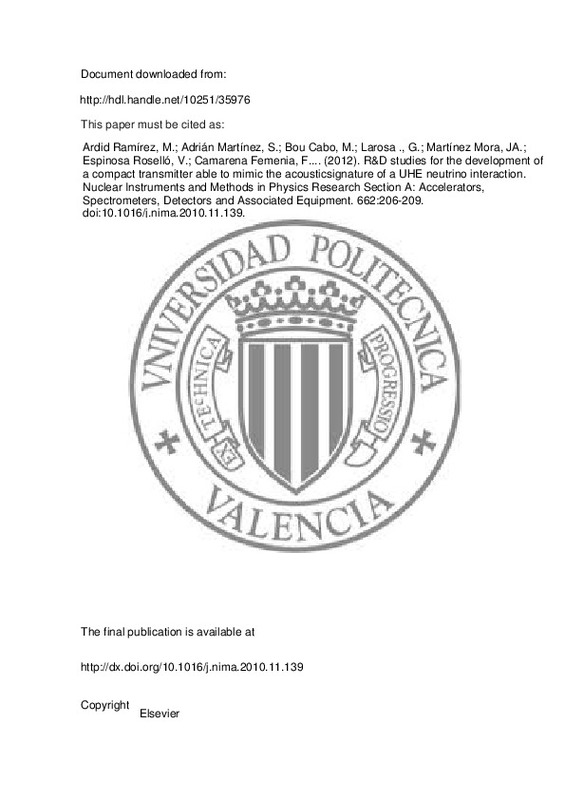Sklar, L. R., Almutawa, F., Lim, H. W., & Hamzavi, I. (2013). Effects of ultraviolet radiation, visible light, and infrared radiation on erythema and pigmentation: a review. Photochem. Photobiol. Sci., 12(1), 54-64. doi:10.1039/c2pp25152c
Greinert, R., de Vries, E., Erdmann, F., Espina, C., Auvinen, A., Kesminiene, A., & Schüz, J. (2015). European Code against Cancer 4th Edition: Ultraviolet radiation and cancer. Cancer Epidemiology, 39, S75-S83. doi:10.1016/j.canep.2014.12.014
Bais A, Topaloglou C, Kazadtzis S, et al. Report of the LAP/COST/WMO Intercomparison of Erythemal Radiometers, Thessaloniki, Greece, 13–23 September 1999, 2001 WMO-GAW report No. 141 (WHO TD No. 1051) Geneva.
[+]
Sklar, L. R., Almutawa, F., Lim, H. W., & Hamzavi, I. (2013). Effects of ultraviolet radiation, visible light, and infrared radiation on erythema and pigmentation: a review. Photochem. Photobiol. Sci., 12(1), 54-64. doi:10.1039/c2pp25152c
Greinert, R., de Vries, E., Erdmann, F., Espina, C., Auvinen, A., Kesminiene, A., & Schüz, J. (2015). European Code against Cancer 4th Edition: Ultraviolet radiation and cancer. Cancer Epidemiology, 39, S75-S83. doi:10.1016/j.canep.2014.12.014
Bais A, Topaloglou C, Kazadtzis S, et al. Report of the LAP/COST/WMO Intercomparison of Erythemal Radiometers, Thessaloniki, Greece, 13–23 September 1999, 2001 WMO-GAW report No. 141 (WHO TD No. 1051) Geneva.
Lucas, R. M., Yazar, S., Young, A. R., Norval, M., de Gruijl, F. R., Takizawa, Y., … Neale, R. E. (2019). Human health in relation to exposure to solar ultraviolet radiation under changing stratospheric ozone and climate. Photochemical & Photobiological Sciences, 18(3), 641-680. doi:10.1039/c8pp90060d
Parisi, A. V., & Wong, J. C. F. (1998). Quantitative evaluation of the personal erythemal ultraviolet exposure in a car. Photodermatology, Photoimmunology & Photomedicine, 14(1), 12-16. doi:10.1111/j.1600-0781.1998.tb00003.x
Kimlin, M. G., & Parisi, A. V. (1999). Ultraviolet radiation penetrating vehicle glass: a field based comparative study. Physics in Medicine and Biology, 44(4), 917-926. doi:10.1088/0031-9155/44/4/008
M., K., A., P., B., C., & D., T. (2002). Comparison of the solar spectral ultraviolet irradiance in motor vehicles with windows in an open and closed position. International Journal of Biometeorology, 46(3), 150-156. doi:10.1007/s00484-002-0131-5
Tuchinda, C., Srivannaboon, S., & Lim, H. W. (2006). Photoprotection by window glass, automobile glass, and sunglasses. Journal of the American Academy of Dermatology, 54(5), 845-854. doi:10.1016/j.jaad.2005.11.1082
Cadet, J., Grand, A., & Douki, T. (2014). Solar UV Radiation-Induced DNA Bipyrimidine Photoproducts: Formation and Mechanistic Insights. Topics in Current Chemistry, 249-275. doi:10.1007/128_2014_553
Mouret, S., Forestier, A., & Douki, T. (2012). The specificity of UVA-induced DNA damage in human melanocytes. Photochem. Photobiol. Sci., 11(1), 155-162. doi:10.1039/c1pp05185g
Sage, E., Girard, P.-M., & Francesconi, S. (2012). Unravelling UVA-induced mutagenesis. Photochem. Photobiol. Sci., 11(1), 74-80. doi:10.1039/c1pp05219e
Battie, C., Jitsukawa, S., Bernerd, F., Del Bino, S., Marionnet, C., & Verschoore, M. (2014). New insights in photoaging, UVA induced damage and skin types. Experimental Dermatology, 23, 7-12. doi:10.1111/exd.12388
Parisi, A. V., & Turnbull, D. J. (2014). Shade Provision for UV Minimization: A Review. Photochemistry and Photobiology, 90(3), 479-490. doi:10.1111/php.12237
Gies, P., Makin, J., Dobbinson, S., Javorniczky, J., Henderson, S., Guilfoyle, R., & Lock, J. (2013). Shade Provision for Toddlers at Swimming Pools in Melbourne. Photochemistry and Photobiology, 89(4), 968-973. doi:10.1111/php.12078
Li, D., Li, Z., Zheng, Y., Liu, C., & Lu, L. (2015). Optical performance of single and double glazing units in the wavelength 337–900 nm. Solar Energy, 122, 1091-1099. doi:10.1016/j.solener.2015.10.028
Liu, C., Wu, Y., Zhu, Y., Li, D., & Ma, L. (2018). Experimental investigation of optical and thermal performance of a PCM-glazed unit for building applications. Energy and Buildings, 158, 794-800. doi:10.1016/j.enbuild.2017.10.069
Milon, A., Sottas, P.-E., Bulliard, J.-L., & Vernez, D. (2006). Effective exposure to solar UV in building workers: influence of local and individual factors. Journal of Exposure Science & Environmental Epidemiology, 17(1), 58-68. doi:10.1038/sj.jes.7500521
Gies, P., & Wright, J. (2003). Measured Solar Ultraviolet Radiation Exposures of Outdoor Workers in Queensland in the Building and Construction Industry¶. Photochemistry and Photobiology, 78(4), 342. doi:10.1562/0031-8655(2003)078<0342:msureo>2.0.co;2
Håkansson, N., Floderus, B., Gustavsson, P., Feychting, M., & Hallin, N. (2001). Occupational Sunlight Exposure and Cancer Incidence among Swedish Construction Workers. Epidemiology, 12(5), 552-557. doi:10.1097/00001648-200109000-00015
Turner, J., & Parisi, A. V. (2018). Investigation of correlation of broadband UVA reflection to broadband visible reflection for a variety of surfaces in the built environment. Building and Environment, 136, 259-268. doi:10.1016/j.buildenv.2018.03.062
Setlow, R. B. (1974). The Wavelengths in Sunlight Effective in Producing Skin Cancer: A Theoretical Analysis. Proceedings of the National Academy of Sciences, 71(9), 3363-3366. doi:10.1073/pnas.71.9.3363
MacLaughlin, J. A., Anderson, R. R., & Holick, M. F. (1982). Spectral Character of Sunlight Modulates Photosynthesis of Previtamin D
3
and Its Photoisomers in Human Skin. Science, 216(4549), 1001-1003. doi:10.1126/science.6281884
Flint, S. D., & Caldwell, M. M. (2003). A biological spectral weighting function for ozone depletion research with higher plants. Physiologia Plantarum, 117(1), 137-144. doi:10.1034/j.1399-3054.2003.1170117.x
Flint, S. D., & Caldwell, M. M. (2003). Field testing of UV biological spectral weighting functions for higher plants. Physiologia Plantarum, 117(1), 145-153. doi:10.1034/j.1399-3054.2003.1170118.x
Holick, M. F. (2004). Vitamin D: importance in the prevention of cancers, type 1 diabetes, heart disease, and osteoporosis. The American Journal of Clinical Nutrition, 79(3), 362-371. doi:10.1093/ajcn/79.3.362
Holick, M. F. (2005). The Vitamin D Epidemic and its Health Consequences. The Journal of Nutrition, 135(11), 2739S-2748S. doi:10.1093/jn/135.11.2739s
Holick, M. F. (2007). Vitamin D Deficiency. New England Journal of Medicine, 357(3), 266-281. doi:10.1056/nejmra070553
Holick, M. F., Chen, T. C., Lu, Z., & Sauter, E. (2007). Vitamin D and Skin Physiology: A D-Lightful Story. Journal of Bone and Mineral Research, 22(S2), V28-V33. doi:10.1359/jbmr.07s211
Engelsen, O. (2010). The Relationship between Ultraviolet Radiation Exposure and Vitamin D Status. Nutrients, 2(5), 482-495. doi:10.3390/nu2050482
Hossein-nezhad, A., & Holick, M. F. (2013). Vitamin D for Health: A Global Perspective. Mayo Clinic Proceedings, 88(7), 720-755. doi:10.1016/j.mayocp.2013.05.011
Pludowski, P., Holick, M. F., Pilz, S., Wagner, C. L., Hollis, B. W., Grant, W. B., … Soni, M. (2013). Vitamin D effects on musculoskeletal health, immunity, autoimmunity, cardiovascular disease, cancer, fertility, pregnancy, dementia and mortality—A review of recent evidence. Autoimmunity Reviews, 12(10), 976-989. doi:10.1016/j.autrev.2013.02.004
Garland, C. F., Kim, J. J., Mohr, S. B., Gorham, E. D., Grant, W. B., Giovannucci, E. L., … Heaney, R. P. (2014). Meta-analysis of All-Cause Mortality According to Serum 25-Hydroxyvitamin D. American Journal of Public Health, 104(8), e43-e50. doi:10.2105/ajph.2014.302034
McDonnell, S. L., Baggerly, C., French, C. B., Baggerly, L. L., Garland, C. F., Gorham, E. D., … Heaney, R. P. (2016). Serum 25-Hydroxyvitamin D Concentrations ≥40 ng/ml Are Associated with >65% Lower Cancer Risk: Pooled Analysis of Randomized Trial and Prospective Cohort Study. PLOS ONE, 11(4), e0152441. doi:10.1371/journal.pone.0152441
Bogh, M. K. B., Schmedes, A. V., Philipsen, P. A., Thieden, E., & Wulf, H. C. (2010). Vitamin D production depends on ultraviolet-B dose but not on dose rate: A randomized controlled trial. Experimental Dermatology, 20(1), 14-18. doi:10.1111/j.1600-0625.2010.01201.x
Bogh, M. K. B., Schmedes, A. V., Philipsen, P. A., Thieden, E., & Wulf, H. C. (2012). A small suberythemal ultraviolet B dose every second week is sufficient to maintain summer vitamin D levels: a randomized controlled trial. British Journal of Dermatology, 166(2), 430-433. doi:10.1111/j.1365-2133.2011.10697.x
Vähävihu, K., Ylianttila, L., Kautiainen, H., Viljakainen, H., Lamberg-Allardt, C., Hasan, T., … Snellman, E. (2010). Narrowband ultraviolet B course improves vitamin D balance in women in winter. British Journal of Dermatology, 162(4), 848-853. doi:10.1111/j.1365-2133.2010.09629.x
Webb, A. R., Kift, R., Berry, J. L., & Rhodes, L. E. (2011). The Vitamin D Debate: Translating Controlled Experiments into Reality for Human Sun Exposure Times. Photochemistry and Photobiology, 87(3), 741-745. doi:10.1111/j.1751-1097.2011.00898.x
Lagunova, Z., Porojnicu, A. C., Aksnes, L., Holick, M. F., Iani, V., Bruland, Ø. S., & Moan, J. (2013). Effect of vitamin D supplementation and ultraviolet B exposure on serum 25-hydroxyvitamin D concentrations in healthy volunteers: a randomized, crossover clinical trial. British Journal of Dermatology, 169(2), 434-440. doi:10.1111/bjd.12349
Sallander, E., Wester, U., Bengtsson, E., & Wiegleb Edström, D. (2013). Vitamin D levels after UVB radiation: effects by UVA additions in a randomized controlled trial. Photodermatology, Photoimmunology & Photomedicine, 29(6), 323-329. doi:10.1111/phpp.12076
Grigalavicius, M., Moan, J., Dahlback, A., & Juzeniene, A. (2015). Vitamin D and ultraviolet phototherapy in Caucasians. Journal of Photochemistry and Photobiology B: Biology, 147, 69-74. doi:10.1016/j.jphotobiol.2015.03.009
RIVAS, M., ROJAS, E., ARAYA, M. C., & CALAF, G. M. (2015). Ultraviolet light exposure, skin cancer risk and vitamin D production. Oncology Letters, 10(4), 2259-2264. doi:10.3892/ol.2015.3519
Karppinen, T., Ala-Houhala, M., Ylianttila, L., Kautiainen, H., Viljakainen, H., Reunala, T., & Snellman, E. (2016). Narrowband Ultraviolet B Exposures Maintain Vitamin D Levels During Winter: A Randomized Controlled Trial. Acta Dermato Venereologica, 96(4), 490-493. doi:10.2340/00015555-2269
O’Sullivan, F., Laird, E., Kelly, D., van Geffen, J., van Weele, M., McNulty, H., … Zgaga, L. (2017). Ambient UVB Dose and Sun Enjoyment Are Important Predictors of Vitamin D Status in an Older Population. The Journal of Nutrition, 147(5), 858-868. doi:10.3945/jn.116.244079
Fitzpatrick, T. B. (1988). The Validity and Practicality of Sun-Reactive Skin Types I Through VI. Archives of Dermatology, 124(6), 869. doi:10.1001/archderm.1988.01670060015008
Serrano, M.-A., Cañada, J., Moreno, J. C., & Gurrea, G. (2017). Solar ultraviolet doses and vitamin D in a northern mid-latitude. Science of The Total Environment, 574, 744-750. doi:10.1016/j.scitotenv.2016.09.102
UV-B Radiation THE ULTRAVIOLET INDEX Network. Accessed on 12 of February 2020. (http://www.agroambient.gva.es/es/web/calidad-ambiental/datos-historicos-uv).
McKenzie, R. L., Liley, J. B., & Björn, L. O. (2009). UV Radiation: Balancing Risks and Benefits. Photochemistry and Photobiology, 85(1), 88-98. doi:10.1111/j.1751-1097.2008.00400.x
Setlow, R. B., Grist, E., Thompson, K., & Woodhead, A. D. (1993). Wavelengths effective in induction of malignant melanoma. Proceedings of the National Academy of Sciences, 90(14), 6666-6670. doi:10.1073/pnas.90.14.6666
[-]







![[Cerrado]](/themes/UPV/images/candado.png)




